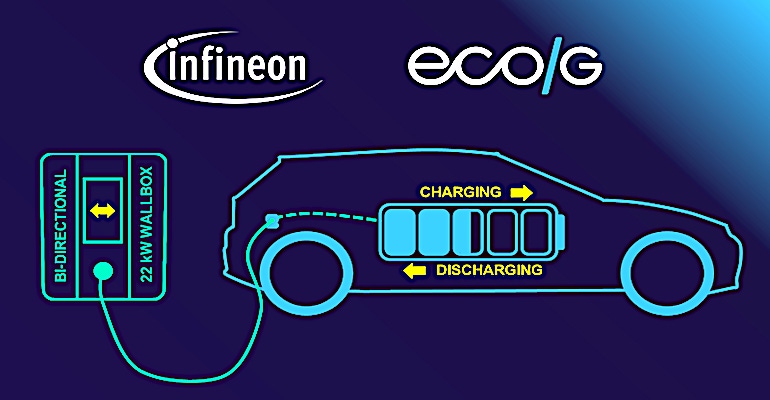EcoG Advances Bidirectional Charging Standard
The goal is for EVs to be able to share power with the grid and a bidirectional charging standard is the first step.

It is essential for electric vehicles to be able to share stored power back to the grid so that they can provide needed stability during times of peak demand, but in the absence of a common standard for bidirectional charging for both cars and charging stations, there has been little progress in this area.
Working as a member of the Charging Infrastructure Initiative (CharIN) association, Munich-based tech company EcoG has introduced such a standard, ISO 15118-20 BPT, which ensures that electric vehicles can be charged bidirectionally.
Vehicle-to-grid (V2G) charging solutions are a crucial component of charging infrastructure because EVs can become part of the grid infrastructure storing surplus solar energy during the day and giving it back during peak loads in the grid. This is especially relevant for powering heat pumps, which run more during cold overnights when there is no solar power available.
The challenge in achieving this benefit has been that there is little compatibility between EV-charging wallboxes and car manufacturers. Under EcoG’s ISO standard, the software will let all vehicle-to-grid-capable vehicles work with supporting chargers. This even includes vehicles that are still being developed, EcoG pledges.
“The fact that bi-directional charging actually works according to ISO 15118-20 BPT is a big step forward,” said EcoG founder and CTO Johannes Hund. “This allows the technology to be applied to the mass market in the future, as customers can now be sure that their wallbox can communicate with any V2G-enabled vehicle in the field.”
In partnership with power semiconductor supplier Infineon, EcoG is offering a starter kit with an integrated 22-kilowatt inverter and EcoG controller.
About the Author(s)
You May Also Like


.jpg?width=300&auto=webp&quality=80&disable=upscale)


